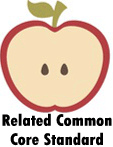Tips for Reading Nonfiction Books
When a child starts reading, he or she usually begins with bedtime stories, fairy tales, and other fiction books. Since they grow up reading fiction books with attractive images, it is quite difficult for them to make up their minds to start reading nonfiction books.
Non-fiction books are becoming an essential part of the academic syllabus nowadays. Children of all ages take an interest in non-fiction books because they teach many important lessons that fiction does not. Here are some tips for reading non-fiction books:
Nonfiction books can be motivational books, books based on truth, real events or history. These books become interesting when they catch one's attention, but the problem is that it is difficult for one to build his/her interest in such type of content.
Stay Relaxed While Reading
No matter what book you are reading, to enjoy reading and for better understanding of the book one needs to stay relaxed. Always select a comfortable place with appropriate lighting, silence, and moderate temperature to enjoy your reading time.
Learn About the Characters of Non-fiction
One of the most important tip to understand a non-fiction book is to learn about the characters. Non-fiction has many parts such as titles, subtitles, captions, index, keywords, and table of contents. In order to completely comprehend the message that is being portrayed by the author, it is important to get to know the characters of non-fiction. You can do so by giving the text features a deeper look. You can focus on the descriptions, explanations, and other such details.
Learning the Main Idea
What fun would it be to read something without knowing the actual purpose of it? Usually, non-fiction is written with a main idea and theme in mind. It is up to the readers to decode that theme correctly. So, when you are reading a non-fiction book, try to guess and predict the text at all times so that you can get a better idea about the theme of it. You can also learn about the theme by paying attention to the titles and subtitles mentioned in the book.
For a nonfictional book, always begin with reading the foreword of the book. Take out the most informative points and jot them down. These points will help you to stay focused and understand the main idea of the book you are reading.
Understand the Organizational Pattern
A non-fiction book can be written in many different organizational patterns. It is important to know what organizational pattern is being followed by the book in order to clearly follow the development of plot and ideas. Usually, non-fiction books are written in chronological order, or comparison and contrast manner.
Highlight Important Points
While reading, always keep different colored pens and highlighters with you. Highlight sentences that you find important or informative. Use different colors on the same page to make your book look attractive for the next time your look at it.
Understand the Hard Words and Concepts
If you cannot understand a word or any concept of the book, do not move on without having full understanding of what is being said. Use a dictionary or whatever resources available to understand the real meaning. Use sticky notes to write that concept down, this will help you in future.
Summarize
The last tip is to summarize the entire text into your understanding of it. This part is important because it teaches you many new words and ideas. When you are done reading the book, try to sum it all up in your own words.
How to Summarize Text?
Usually, reading long and boring texts can be quite time-consuming. They also tend to take a lot of your effort. Summaries are used to thoroughly understand a text without having to read through the entire body. A summary of a text is usually a more succinct form of it. It does not contain any added information. Rather, it only briefly describes the main points and ideas of the huge and long text. Summaries can be very helpful that is why everybody should learn how to write them. Here are some important tips and tricks that you can use to summarize a text.
Cite Author and Title
Every summary of a text contains the name of the author and title of the text. This is to make sure that the reader understands what they are about they read. It also makes it easier for the reader to know more about the text.
Indicate the Main Ideas
The actual purpose of the summary is to tell the main idea of the text to the audience in a brief way. Hence, all summaries contain the main idea of the text. When you start to write, begin with writing the introductory paragraph that introduces the readers to the main theme of the text. If the text is not long enough to have a summary of several paragraphs, then you can also use a single line as the introduction to the topic. Usually, summaries are brief and to the point, so it is best to miss out on the unnecessary details. Only mention the extremely important points of the text.
Avoid Writing Opinions
A summary should not contain your personal and biased opinions on the topic. You should only mention the facts that are already mentioned in the text. Your response has nothing to do with the summary.

